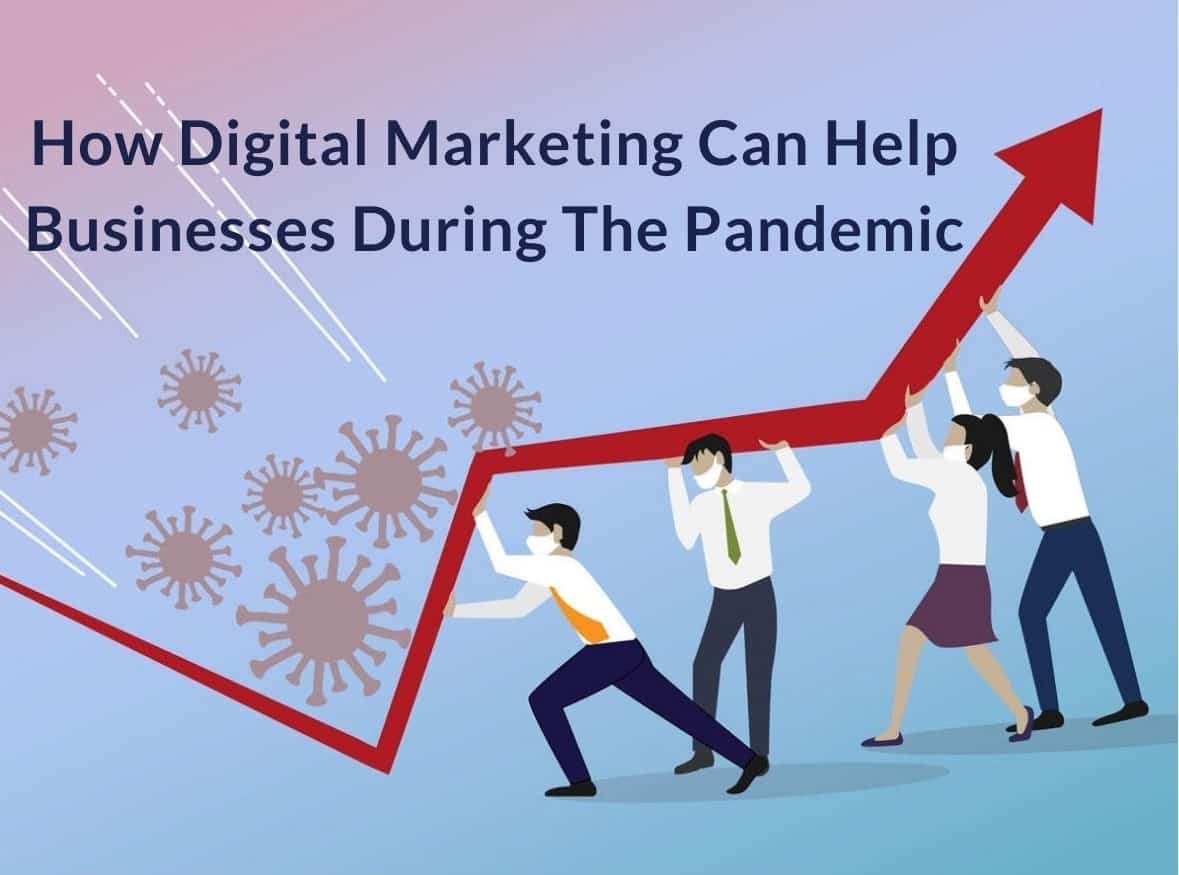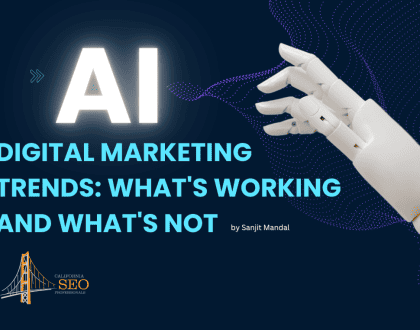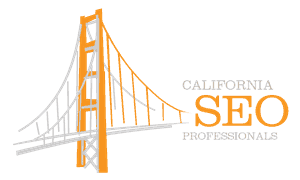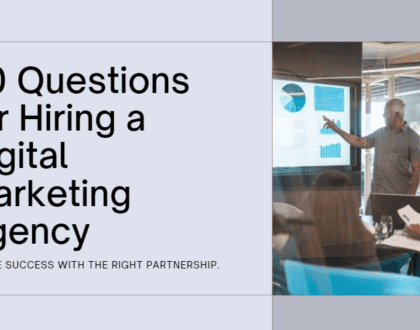5 Ways Digital Marketing Helps Businesses During The Pandemic

To say we live in unprecedented times would be an understatement. The planet has certainly seen pandemics, upheaval, and economic downturns before, but modern times see all 3 in COVID-19. The pandemic has had a massive impact on the global economy and, by extension, digital marketing. However, it’s not an insurmountable challenge, as digital marketing still helps businesses during the pandemic. From individual marketing solutions to rerouting strategies, there’s room to both adapt and evolve. Simultaneously, expanding on tried-and-tested techniques ensures that innovation remains safe and informed.
Digital marketing after COVID-19
For many in the digital marketing sphere, the pandemic wasn’t a complete reset. Innovation and digitization indeed became fundamental and dominated the discussion, but for many, it was merely an accelerator. For example, Montclair State University’s Rae Yule Kim discusses it in such terms, “as an accelerator of the structural change in consumption and the digital transformation in the marketplace”. This perspective best highlights how digital marketing helps businesses during the pandemic; it reinforces digitization, an existing trend.
Most notably, digital marketing already grasped how emerging trends, technological, economic, or behavioral, supported digitization. While examples supporting this are numerous, consider three among the most significant ones.
#1 The crucial role of Search Engine Optimization (SEO)
SEO has seen multiple changes over the years, as most digital marketers will swiftly attest to. Naturally, most such discussions will focus on Google, given its dominance in the search engine market. However, no search engine algorithm has remained unchanged over the years, and no search engines have devalued SEO.
In brief, SEO matters for startups and established businesses alike. It’s a cost-effective, holistic approach to improving content for search engines that remains prominent. It helps raise awareness and exposure, acquire leads, and drive sales. In this regard, the pandemic simply pronounced the existing usefulness of SEO as a powerful tool.
#2 The surge of mobile devices users
Similarly, digital marketing helps businesses during the pandemic by reevaluating the surge in mobile devices. Statista estimates that there will be 3.8 billion smartphone users in 2021, which is an absolutely vast number. This sizeable potential audience uses smartphones to navigate the web, engage with brands, and research products and services.
Responding to this trend, digital marketing adjusts its efforts toward cleaner website designs, easier website navigation, and faster loading speeds. Notably, these and similar mobile-friendly practices significantly overlap with SEO. Search engines grasp this new digital reality and prioritize mobile-friendliness as a significant factor. Finally, such practices also help optimize business websites irrespective of user devices; all businesses benefit from a better user experience.
#3 The dominance of social media
Finally, social media marketing has also taken off in recent years. Studies estimate that about 40% of the world’s population, an approximate 3 billion people, now uses social media. This massive potential audience offers immensely lucrative marketing opportunities, as digital marketers frequently note.
This trend is equally persistent. A vast majority of today’s consumers already seek to engage with brands on social media. In turn, brands can more easily champion social causes, which consumers value more than ever before. Finally, unprecedented 2-way communication options find immense success, as multiple business juggernauts have proven. And, of course, the pandemic has fueled increased social media activity for digital marketers to thrive on.
How digital marketing helps businesses during the pandemic
In light of the above, then, let us delve into specifics. There are as many innovative ways to overcome the financial challenges of COVID-19 as there are businesses. But, for the sake of text economy and convenience, let us focus on five key ways in which digital marketing helps businesses during the pandemic.
#1 It pronounces SEO
First and foremost, digital marketing pronounces the need for SEO in the post-pandemic era. Ranking on the first page in search engine results pages (SERPs) is even more beneficial than before. Organic traffic is invaluable to any business that seeks to adapt to these challenging times. Moreover, customer retention is a focal point of SEO strategies due to the mantra that “content is king”. In an era when many businesses refocus their budgets, customer retention is vital. Indeed, studies consistently find that acquiring new customers costs much more than retaining existing ones. Some studies quantify this cost as six times higher than merely keeping loyal, engaged customers – which SEO helps ensure.
In essence, then, digital marketing highlights the known benefits of SEO in an era that needs them most, including:
- Organic traffic and increased lead acquisition rates
- Brand awareness and loyalty
- Customer retention and increased conversion rates
These and other benefits are already universally beneficial, by all means. But bringing SEO back into the forefront of marketing provides an excellent foundation to build upon.
#2 It highlights the need for a backlink strategy
On the subject of organic traffic, then, the pandemic has accentuated the need for improved lead acquisition. SEO delves into it holistically, but a notable strategy in its arsenal is a healthy backlink strategy. Whether your business is small or large, you’ll need to get the most out of your links to ensure traffic. In turn, increased backlink and referral traffic improves your website authority score and boosts your SEO efforts.
However, a healthy backlink strategy hinges on a vital distinction, one that digital marketing is now stressing more. Namely, the difference between ‘follow’ and ‘no-follow’ links.
Follow links
With very few exceptions, links are ‘follow’ links by default. In essence, follow links allow sites to transfer authority between them through backlinks. Specifically, a linked site will see its page authority (PA) score increase if a trustworthy, reputable site links to it. In HTML, follow link looks like this:
<a href=”https://example.com”>example anchor text</a>
Nofollow links
In contrast, ‘nofollow’ links don’t permit this transfer to take place. Sites that tag links as ‘nofollow’ essentially tell Google that they don’t endorse said links. Thus, no PA transfers can occur. Nofollow links look like this:
<a href=”https://example.com” rel=”nofollow”>example anchor text</a>
The need for both
This vital distinction is, naturally, immensely useful to all businesses. However, as mentioned above, digital marketing now promotes a healthy balance of both. PA transfers aside, both generate organic traffic – and no excesses in either help avoid potential search engine penalties.
#3 It accounts for the continued momentum of social media marketing
Similarly, on the subject of traffic, the aforementioned social media statistics are worth consolidating here.
- Social media platforms boast continuously increasing user bases
- The majority of social media users seek to engage with brands
- Social media marketing offers a much higher return on investment (ROI) than traditional marketing
Coupled with the surge of mobile devices highlighted above, one can’t deny the merit of social media marketing. It’s a bold new marketing frontier with immense innovation opportunities – and digital marketing embraces it firmly.
Social media allows for 2-way communication through post comments, Q&As, AMAs. It allows for time-sensitive content, such as Twitter posts, that incite engagement through urgency. It allows for more visually stimulating, alluring content that audiences react to, such as Instagram’s vibrant format. And, most significantly, it provides access to vast potential audiences, such as Facebook’s 2.8 billion monthly users.
#4 It transforms the sales funnel into the flywheel
With these focal points, digital marketing begins to reroute marketing in a bold yet reasonable direction. Specifically, the dire conditions that the pandemic brought highlighted the significance of customer retention. In turn, digital marketing now transforms the sales funnel, an acquisition approach, into the flywheel, a retention approach.
This distinction may well deserve its own article to properly, thoroughly explore, but its core is simple enough. The flywheel model focuses on a customer’s entire journey, overlapping with the tried-and-tested customer journey mapping practice. Providing constant satisfaction throughout the journey promotes a customer-first mentality that, in turn, yields higher retention rates. In an era of such dire circumstances, customer retention rates may well dictate a business’s success.
#5 It promotes a customer-first outlook
Finally, all of the above culminate into broader adoption of a customer-first approach. This philosophy was already seeing success before the pandemic due to accelerating digitization and increased online competition. However, the pandemic has likely made this reasonable choice necessary for many.
In accord with customer journey mapping, a customer’s journey is typically divided into four phases:
- Discovery
- Research
- Conversion
- Post-sale engagement
Customer-first philosophies both recognize this division and build on it. Where old strategies would primarily focus on conversions and sales alone, customer-first strategies enhance all four areas. In turn, they allow for increased customer satisfaction, higher retention rates, and, ultimately, a more sustainable business model.
Conclusion
To summarize, digital marketing helps businesses during the pandemic by stressing the merits of digitization. For many, this new era acted as an accelerator of an existing shift in marketing and consumption habits. In this regard, digital marketing presents the known merits of SEO, backlink strategies, and social media marketing. Simultaneously, it transforms the sales funnel into the flywheel – a model of perpetual satisfaction and retention. Together, these practices promote quicker digitization toward customer-first business outlooks, philosophies that already boasted success. In these regards, digital marketing confronts the post-pandemic era as an opportunity to grow and evolve, following safe paths.
Recommended Posts

AI Digital Marketing Trends: What’s Working and What’s Not
November 28, 2023


